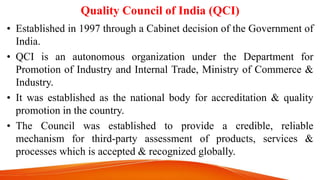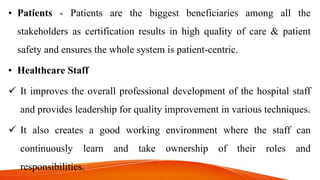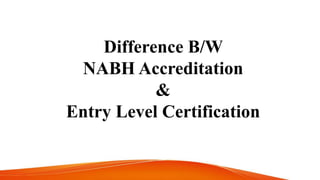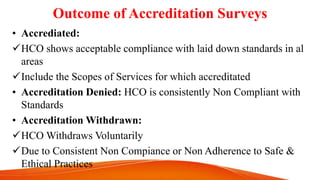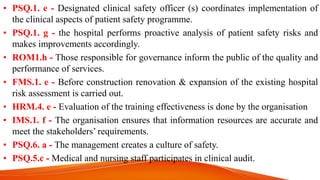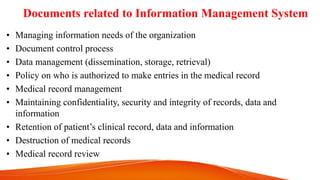The document provides information about NABH (National Accreditation Board for Hospitals and Healthcare Providers) accreditation and certification processes. It discusses that NABH was established in 2006 by the Quality Council of India to set standards for healthcare organizations and improve quality of care in India. It operates various accreditation and certification programs for different types of healthcare facilities. The document outlines the benefits of NABH accreditation for patients, healthcare staff, organizations, and regulatory bodies. It also describes the differences between NABH accreditation and entry-level certification, which provides a stepping stone for organizations to enhance quality and work towards full accreditation. Key patient-centered and organization-centered quality standards developed

